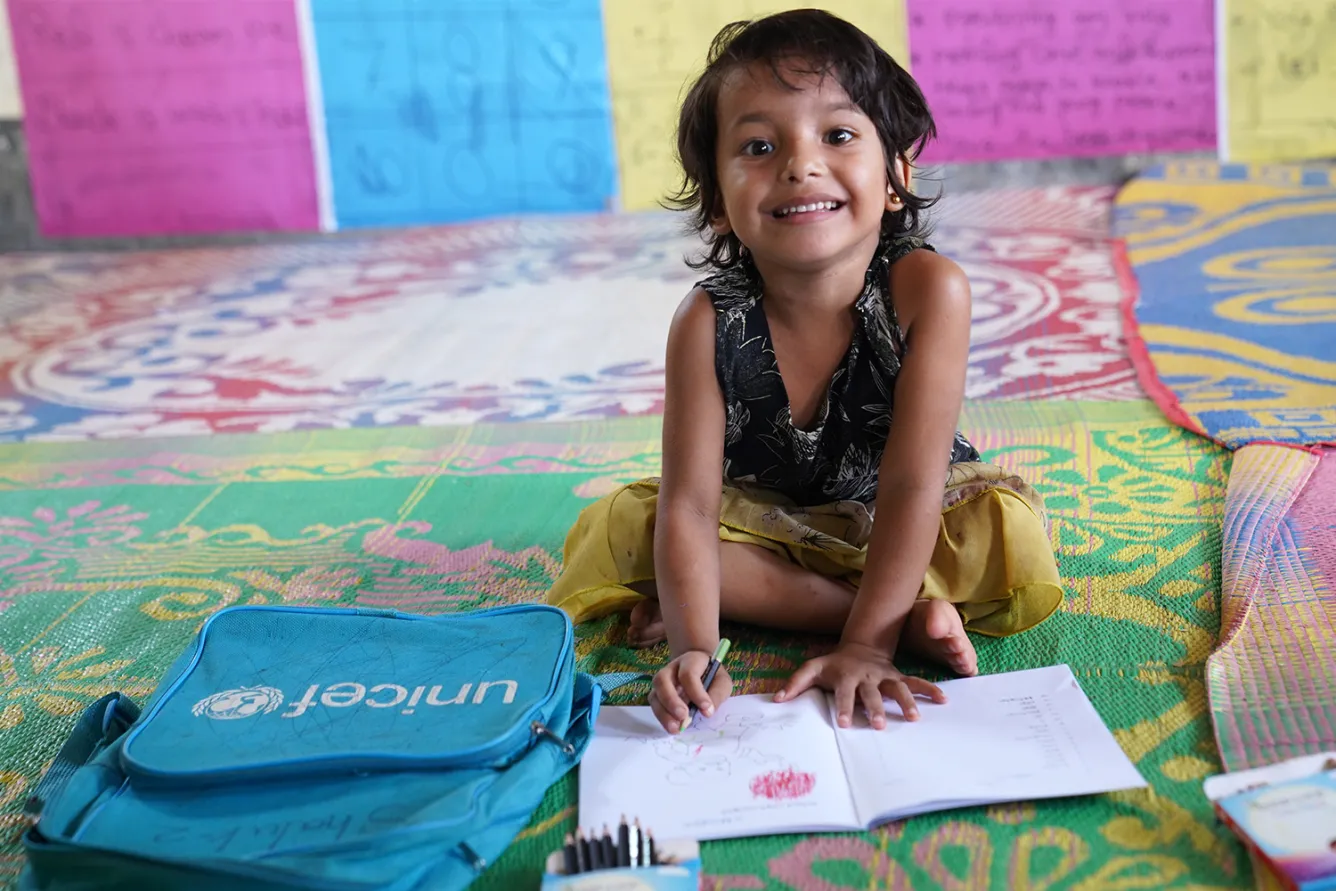UNICEF’S RESPONSE TO THE ROHINGYA REFUGEE CRISIS
In August 2017, Rohingya families fled persecution and brutal violence. But uncertainty about the future still grips those living in the world’s largest refugee settlement. UNICEF is working to provide life-saving humanitarian support and protect the rights and dignity of Rohingya refugees.
WHAT IS THE ROHINGYA REFUGEE CRISIS?
As violence flared in Myanmar in August 2017, hundreds of thousands of Rohingya refugees escaped to southern Bangladesh in search of safety.
They joined around 300,000 people already in Bangladesh from previous waves of displacement, effectively forming the world’s largest refugee camp.
About half a million Rohingya refugee children are now living in exile from their home country. They live in temporary shelters in highly congested camps that are vulnerable to climate-related disasters.
The Rohingya rely entirely on humanitarian assistance for protection, food, water, shelter and healthcare. Many have been born in this limbo. Their futures are uncertain.
HOW IS THE ROHINGYA REFUGEE CRISIS AFFECTING CHILDREN?
While basic services have been provided, children still face disease outbreaks, malnutrition, inadequate educational opportunities, violence and exploitation. Meanwhile, annual cycles of heavy monsoon and cyclones pose great risks to both Rohingya refugees and host communities.
Older children and adolescents who lack opportunities to learn or make a living are at risk of becoming a “lost generation,” susceptible to traffickers and exploitation. Girls and women are at particular risk of sexual and other gender-based violence in this situation, including being forced into child marriage and being left out of school as parents keep them at home.
HELP UNICEF RESPOND QUICKLY TO HUMANITARIAN EMERGENCIES AROUND THE WORLD
HOW IS UNICEF HELPING ROHINGYA REFUGEES IN BANGLADESH?
UNICEF has been working in the refugee camps in Bangladesh from day one, and is still there for every Rohingya refugee child who needs safe water, healthcare, protection, nutrition and education.
We are working to ensure that Rohingya refugees have educational opportunities, access to healthcare and services, safe water and sanitation, as well as opportunities which will ensure that the refugees are equipped and ready to return to a life of dignity in their homeland.
To help prevent a “lost generation,” UNICEF and partners have enrolled more than 300,000 children in classes.

In 2022, UNICEF, with the help of our donors and partners:
- Supported 265,696 Rohingya refugees with access to safe water supplies;
- Provided biannual Vitamin A supplementation for 144,000 refugee children under five;
- Provided primary healthcare and essential services to 180,000 Rohingya refugees;
- Supported 230,000 learners with access to formal and non-formal education;
- Reached 347,000 people with mental health and psychosocial support in camps and host communities.
